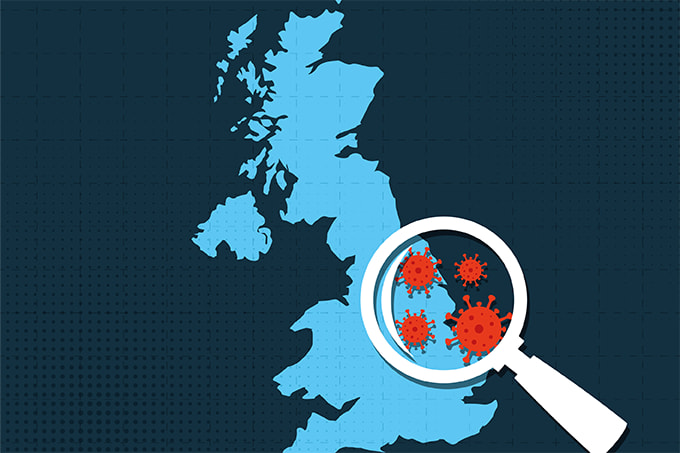Few things have dominated recent news releases as much as the 2019 novel coronavirus. This tiny 30 kb RNA-based virus has spread rapidly around the world, sparking public anxiety over the possibility of a dangerous pandemic. But as quickly as the virus is spreading, so too are innovations designed to combat it. One key technology in those endeavors is gene sequencing.
“It seems we are still in the learning phase about the extent of the outbreak – how, if, and when it can be contained and, more importantly, how it can be treated or prevented via a vaccine,” says Hesaam Esfandyarpour, founder and CEO of sequencing company Genapsys. Nevertheless, government officials in China have stated publicly that high-throughput gene sequencing is one of two key technologies being used to combat the outbreak (1); the other is antiviral medication. But identifying the pathogen’s genome is not the only purpose of sequencing – understanding more about the virus’ genome and mutations is also vital to developing a vaccine.
Legacy gene sequencers use optical technology first pioneered in the 1990s – essentially using microscopes, lasers, robots, scanners, and tubes to view and analyze the DNA chains physically via fluorescent tags. These systems are large, expensive, and challenging to maintain; the devices themselves may cost up to US$1 million and require tens of thousands of dollars in consumables and reagents. As a result, the sequencing industry is extremely centralized – a situation that severely limits access, especially in a crisis situation such as the current coronavirus outbreak.
And that’s why industry players are currently focusing on affordable, portable, accurate sequencers to help tackle the outbreak. A sequencer that can be transported in an ordinary vehicle for quick movement from one site to another can be deployed at hospitals, airports, and public transportation hubs – meaning it can be more easily used to generate quick results on virus samples.
Although efforts to tackle the 2019 novel coronavirus outbreak have lent impetus to these innovations, increased access to gene sequencing goes far beyond applications in disease diagnosis and treatment. “Gene sequencing will set off a revolution in agriculture, drug discovery, cancer treatment, forensic science, research, and more,” says Esfandyarpour. “Even those who don’t get their genes tested will benefit from this technology being more accessible – safer food at the grocery store, better medicines at the pharmacy, and more accurate diagnosis in clinical settings.”
The 2019 novel coronavirus outbreak is just one example of how tiny things can profoundly impact our lives and our global society. “We live at the whim of the molecular world,” Esfandyarpour says. “We are entering a multi-decade era of genomics that will revolutionize many industries, including healthcare, diagnostics, forensics, agriculture, and personalized medicine.” Will accessible sequencing be the key that unlocks the door to these advances? Time will tell, but the rapid response to this latest infectious disease outbreak indicates a promising future.

References
- L Zhou (2019). Available at: https://bit.ly/2uoc8UN.




